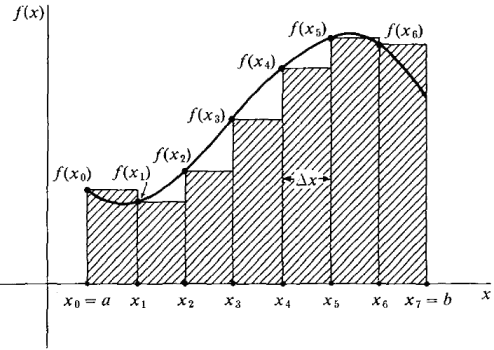Today we'll look at the natural logarithm lnx as an integral. Let's first consider the function ln(x), which is the natural logarithm of x. d/dx ln(x) = 1/x, so we can say that the integral of ln(x) from 1 to x is the value of ln(x) at x, because ln(x) at x = 1 is 0. Here's a better visual. Pay attention to the black writing in the top right of the image.
You'll see in the first image that I've also computed the area under the curve from .5 to 1. It happens to be exactly the same as the area from 1 to 2, but if you compute the natural logarithm of .5 you'll get -.693, thus requiring you to keep in mind that although the sign of the result is negative, the area is most certainly positive.
So there you go, a simple example of the natural logarithm as an integral of 1/x. Keep in mind integration and differentiation are reverse processes. You were given a function and were asked to the area under it on an interval. You took the integral (or antiderivative) of the function and although we neglected to mention it, you took the difference of the limits of integration evaluated using the integral of 1/x - we ignored Ln(1) as it equals zero - but to be formal.
Integral of 1/x = Ln(x) | Area between 1 and 2 equals Ln(2) - Ln(1) = Ln(2) = .693.
This practice is derived from the fundamental theorem of calculus:
 .
.
Then

Here's a great video on the fundamental theorem if you'd like to brush up/learn more about it.



 the derivative of c is equal to the slope of the secant line between a and b. Now, said that way you might be thinking to yourself, "what's the big deal." Fair enough. Let's take a look at a visual representation made in Mathematica:
the derivative of c is equal to the slope of the secant line between a and b. Now, said that way you might be thinking to yourself, "what's the big deal." Fair enough. Let's take a look at a visual representation made in Mathematica:






 .
.









